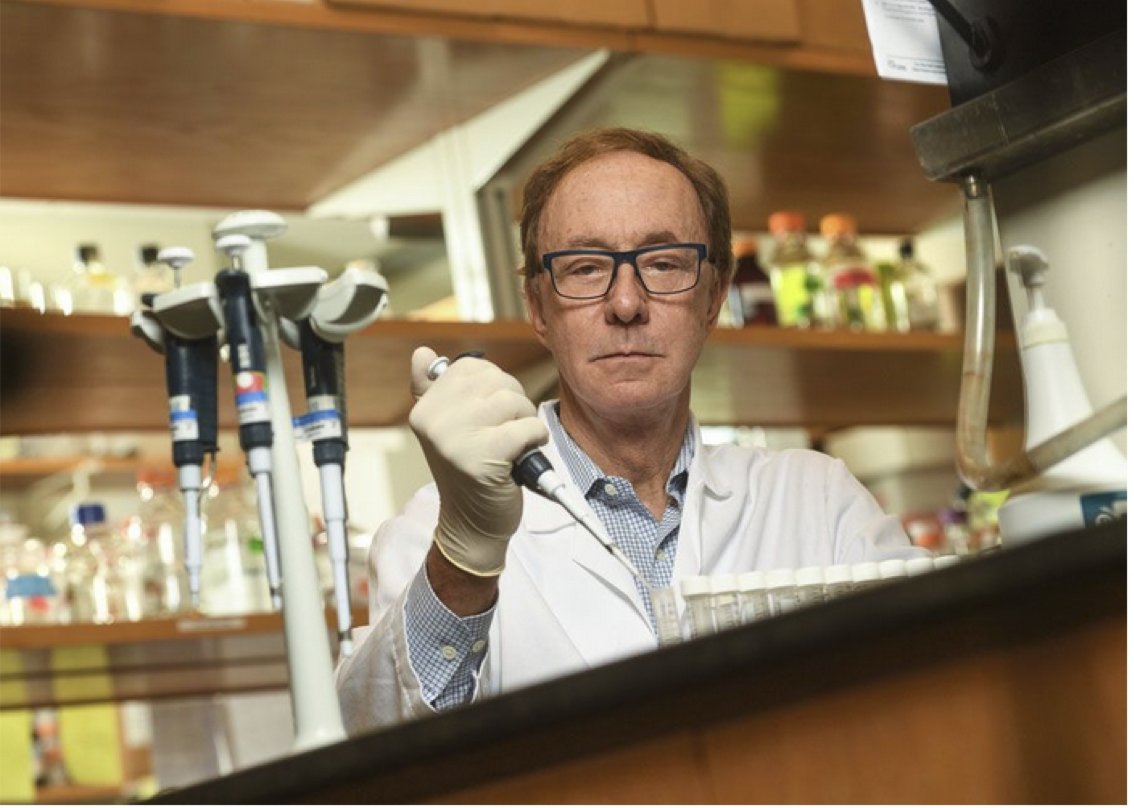
Read full story in Emory News Center
George Painter: "I hope we can get there fast enough to make a difference."
As a leading researcher in the development of new antiviral drug applications, George Painter is driven to help create pharmaceuticals that can make a difference, saving and changing lives.
And as the co-inventor of patents that have led to drugs that have been foundational to the modern treatment of HIV and hepatitis B, he’s been fortunate to see that happen.
So when news emerged from China about a fast-spreading new coronavirus, Painter was intrigued.
A professor of pharmacology at the Emory School of Medicine, Painter is also CEO of Drug Innovations at Emory (DRIVE) and director of the Emory Institute of Drug Development (EIDD).
For several years, he and his collaborators at the University of North Carolina at Chapel Hill and Vanderbilt University Medical Center have been working under contract with the National Institute of Allergy and Infectious Diseases on developing measures to fight respiratory viruses including SARS and MERS.
As luck would have it, just as the coronavirus was emerging, Painter had been working to develop a new version of a drug that has already proven effective against SARS and MERS viruses in the laboratory. Based on the work, he suspected that a modified version of that drug — EIDD-2801— could potentially prove useful in fighting the novel coronavirus.
Coronaviruses encompass a large spectrum of what are termed “RNA viruses,” because they carry their genetic code as RNA rather than DNA, he says. And they include some of the most devastating diseases known to man, including ebola, polio, influenza and SARS.
News of the latest coronavirus left him with a strange sense of déjà vu, not unlike the early days of working on drugs to fight HIV. “All of the sudden, a lot of people were falling ill and dying, and the levels of morbidity and mortality were significant,” says Painter, who holds three academic degrees from Emory.
“We were immediately being contacted by our sponsors at the National Institute of Allergy and Infectious Diseases to see if we could treat this virus,” he says. “Based upon our experience to date, we think that’s a good possibility.”
About the same time, the team also heard from the U.S. Food and Drug Administration, requesting that “within 48 hours, we return all the data we had that makes us think we could treat this, which we did,” he says. “Needless to say, there were some very late nights.”
Though they haven’t been advised on next steps, Painter and his colleagues will continue to follow standard protocols in moving the drug toward clinical trials. “If the government advises us to accelerate the process, we would ask for guidelines to do that and obviously comply with those guidelines,” he notes.
Timing, as they say, is everything. To see a drug under development suddenly emerge as a potential response to a global health crisis “is very exciting,” Painter acknowledges. “For the group we formed here at Emory, DRIVE, that’s our mission. We’re a not-for-profit intended to address emerging and unmet needs around viral infections, and this is definitely an emerging need.”
Painter’s hope is the outbreak levels off quickly. “But if our drug is needed, and there is a pathway, I also hope that we can get it there fast enough to make a difference.”
Learn more at Coronavirus: Resources and Research

